The Dressmaker: A Tragicomedy of Fashion and Hypocrisy in the Australian Outback
A quirky and well-acted, yet somewhat absurd, tragicomedy about fashion and hypocrisy set in the Australian outback.
The year is 1951. Tilly Dunnage (Kate Winslet), a dressmaker with a past, returns to her small hometown of Dungatar in rural Australia. Twenty-five years prior, she was accused of murdering a classmate and sent away to a boarding school, from which she eventually escaped to Europe. Now, Tilly is back to settle scores with those who separated her from her mother (Judy Davis). Her weapon of choice against the town’s hypocritical conservatives? The glamorous world of Parisian fashion, transforming ordinary women into stunning beauties.

Director Jocelyn Moorhouse is married to P.J. Hogan, the director of “My Best Friend’s Wedding” and “Peter Pan.” Hogan contributed to the screenplay of “The Dressmaker.”
A Town Steeped in Secrets
Australian author Rosalie Ham claims her childhood in a small town was idyllic. However, this is hard to believe when reading her debut novel and watching its film adaptation. “The Dressmaker” seethes with hatred for provincial morals and customs. The residents of Dungatar are portrayed as dim-witted and malicious degenerates, whose boundless hypocrisy cannot conceal their vile souls. One is immediately reminded of the biblical Sodom and Gomorrah, with Tilly as the avenging angel sent to determine if there are any righteous people in the town whose presence would avert divine wrath and the complete destruction of Dungatar.
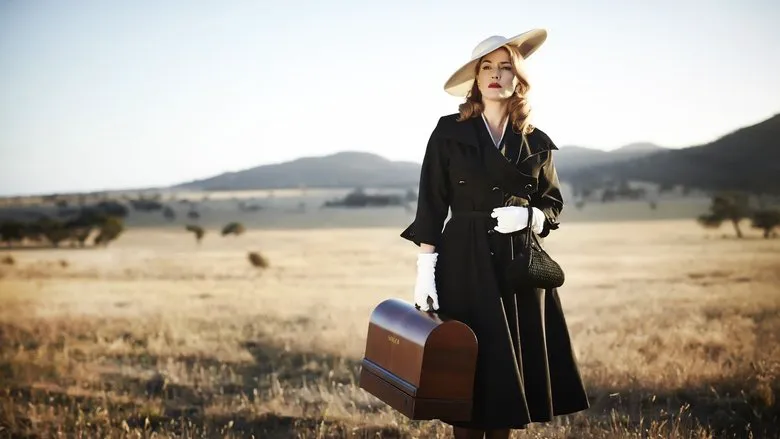
A Promising Premise Gone Astray
It’s a promising premise, and one can only admire the fact that Tilly’s primary weapon of revenge is her Singer sewing machine, rather than a revolver, which would be out of place in the hands of a former Parisian. However, after establishing its central theme, the film largely forgets about it. Instead of a focused and purposeful narrative, the audience is presented with a chaotic and drawn-out story. The film is so vague that it’s unclear whether Tilly wants to avenge herself on the “best people” of Dungatar or, on the contrary, to ingratiate herself with them and prove that they were wrong to consider a ten-year-old girl an incorrigible criminal. While it seems at the beginning of the film that the heroine has a cunning, well-thought-out plan, it becomes clear in the middle of the film that Tilly is acting at random and going with the flow, which does not reflect well on the heroine.
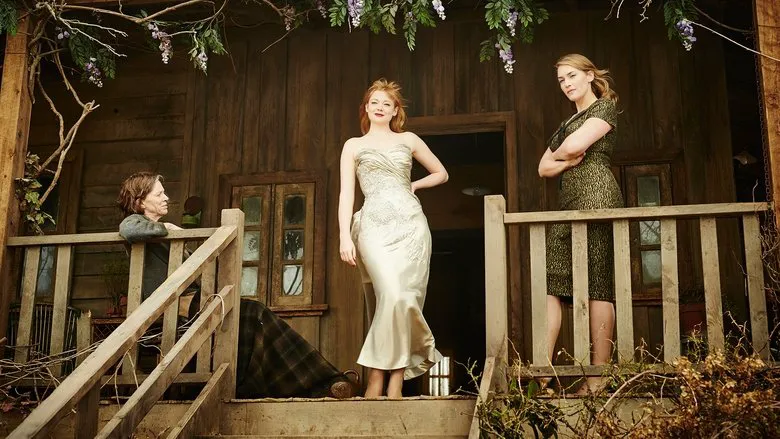
To prepare for her role as a dressmaker, Kate Winslet learned to sew and participated in the creation of the dresses worn by the film’s characters.
The Downfall of Randomness
To bring the plot back on track, the film commits one of the worst screenwriting sins: changing the course of events through absurd coincidences. Coincidences are fine at the beginning of a film when you need to start the plot engine. But once the film reaches cruising speed, its events should logically follow one another, and absurd coincidences become inappropriate. In “The Dressmaker,” there is not just one coincidence, but several, and they all significantly affect the course of events. To put it mildly, this makes an unpleasant impression.
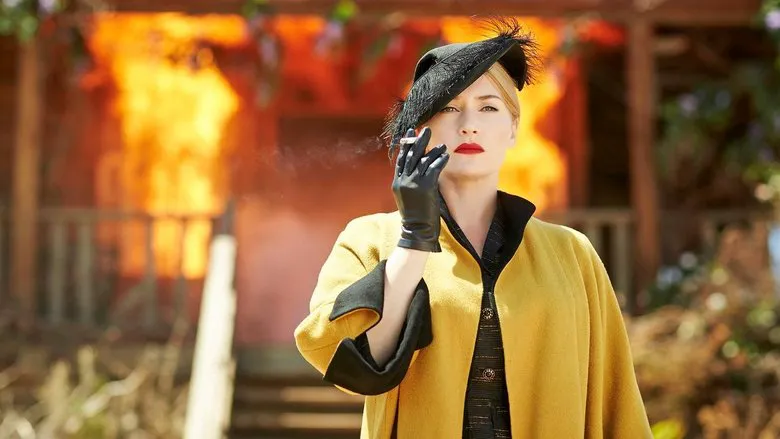
A Questionable Motivation
Why are the book and film structured this way? Probably to make the main character more charming and prevent viewers from seeing her as a cunning villain. But those whom Tilly wants to avenge are portrayed as almost cartoonish villains, which excuses any actions directed against them. On the contrary, the fact that the heroine hesitates and almost throughout the film does not try to crush the villains like bugs makes her not virtuous, but weak and indecisive. After all, the crimes of the villains are obvious, and none of them even tries to repent.
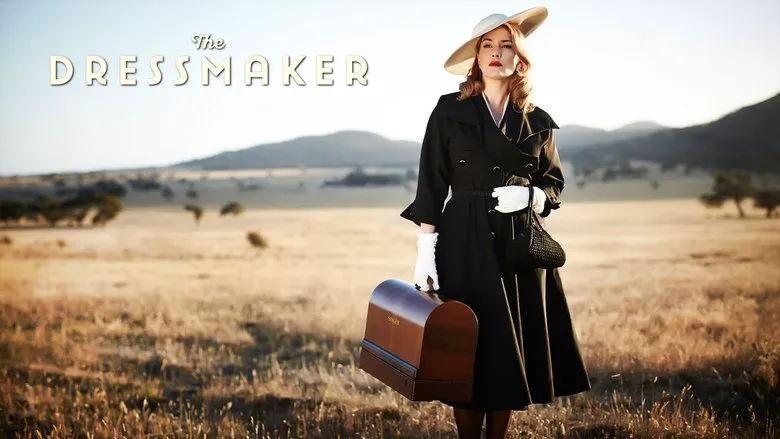
Genre Confusion
The strange plot creates an even more serious problem: genre ambiguity. For an hour and a half, “The Dressmaker” plays by the rules of farces and rom-coms, and then suddenly begins to shed blood, dig graves, and act according to the laws of dark “black” comedies. Yes, in principle, you can change the genre during the narrative (a classic example is “Psycho,” which begins as an adventurous story), but not in the last quarter of the film! Such a “surprise” simply cuts viewers off from empathizing with the characters, since tuning in to a new wave turns out to be almost impossible. However, it is not easy to empathize in the early scenes either, since there is a lot of deliberate theatrical overacting in “The Dressmaker,” which looks implausible on the screen.
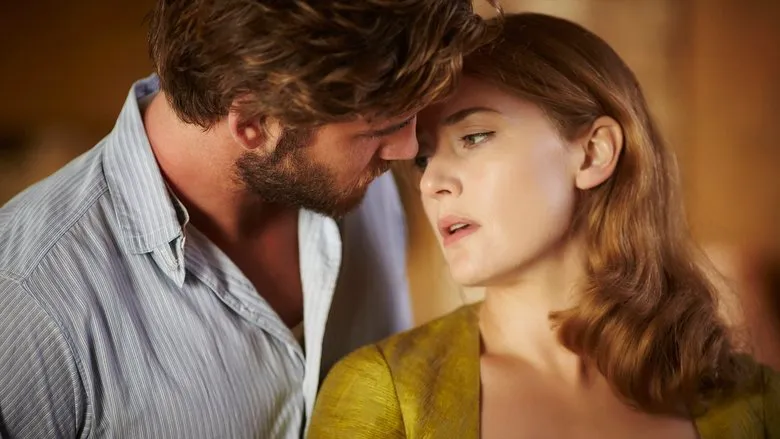
Redeeming Qualities
On the other hand, the overacting of the stars often turns out to be a good self-valuable attraction. For example, Hugo Weaving, former Agent Smith and Elrond, is very funny as a town policeman who loves to sew and wear women’s dresses, and two-time Oscar nominee Judy Davis is sometimes hilarious as a grumpy and eccentric old woman who has long lost her marbles. In turn, Liam Hemsworth with a courageous beard dazzles with sex appeal, even when the camera is not focused on him. Although usually this film, designed for women, “licks” Hemsworth’s body as if it were a Playboy model in a 1980s film. The supporting actors are also good - for example, Sarah Snook from “Predestination,” who transforms more in the course of “The Dressmaker” than Alisa Freindlich in “Office Romance.” And, of course, Kate Winslet is irresistible as a stylish and emotional beauty. She is good even when the script does not know what to do with her.
Final Verdict
Overall, “The Dressmaker” leaves a contradictory impression. It has interesting ideas, successful scenes, colorful characters, and stylish outfits, but it is constructed so unsuccessfully that it negates its own merits. So, the answer to the question “Is it worth buying movie tickets?” depends on how much you love Winslet, Weaving, and Liam Hemsworth, and how much you hate small towns where everyone knows each other and everyone is nasty to each other.